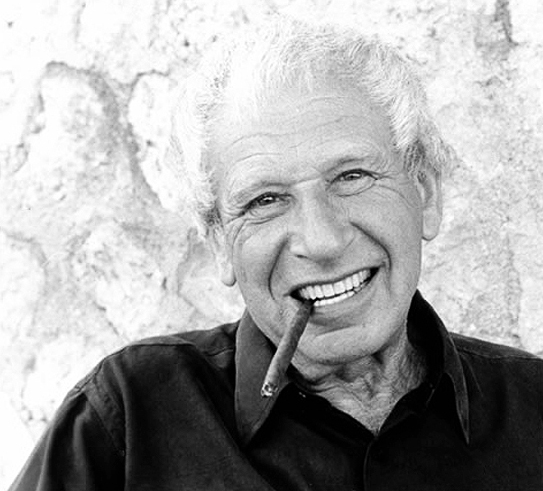Performance pioneer and former Head of Theatre Design, Ralph Koltai, passes away aged 94
Prolific and ground-breaking, Ralph Koltai designed the sets for some of the 20th century’s most powerful performances. Over 250 productions and seven decades, he redefined the discipline pushing it from the traditions of the passive painted backdrop towards a total immersion for all the senses.

Born in Berlin in 1924, Koltai came to London on one of the last kindertransport trains in 1939. He volunteered for military service and served as a translator for Sir Hartley Shawcross at the Nuremberg Trials. After wartime, he studied first at Epsom Art School and then the Central School of Art and Design (now Central Saint Martins). Initially working in opera and ballet, Koltai moved into theatre design and worked regularly for the National Theatre and the Royal Shakespeare Company. For a retrospective in 1997, director Trevor Nunn wrote “Koltai’s curriculum vitae reads like a history of the development of the last forty years of theatre in this country.”
Koltai’s notable designs included 1963’s The Representative, which opened to reveal the Pope holding court in a gas chamber; English National Opera’s Ring Cycle from 1970, which combined elements of the American space programme with the fall of the gods and Fritz Lang’s Metropolis – brought to life for the stage in 1998 against a giant Alfa Romeo gearbox (kinetic only through the use of hovercraft technology).
Koltai was Head of Theatre Design at the Central School of Art and Design from 1956 to 1972 and inspired generations of practitioners including Maria Bjornson and John Napier – designer of the stratospheric musical successes of the 1980s such as Les Misérables, Cats and Miss Saigon.
“I owe my entire career to Ralph Koltai. He saw something in me I couldn’t see myself.”
John Napier
His legacy lives on not only through the students he influenced but also in the development of the discipline itself – isolated elements brought together, unified on stage into a total environment, an all-encompassing experience. As Professor Pamela Howard, friend and fellow designer, has noted, Koltai was a “scenographer” before the word was in common use. She recalls his unique ability to “give directors what they want before they know they want it... all theatre is specific to the place it is performed in and Koltai was the master at conquering the theatre space".
His first love was sculpture, a passion that informed the use of material and movement in his work while giving him a distinct broad perspective. Peter Bond, lecturer on BA Performance: Design and Practice at Central Saint Martins, not only took inspiration from Koltai as an emerging practitioner but also taught alongside him:
“He gave us that art school perspective. Sometimes theatre schools or conservatoires were connected to old-school disciplines like ballet and opera; Ralph taught us through visuality that being an artist from an art school brought us into all-round sensory experience.”
As traditional theatre gave way to the overlapping practices of performance art, live art, immersive theatre and beyond, Koltai’s revolution continues to be reflected in the work of Central Saint Martins alumni like Bunny Christie, Hildegard Bechtler, Anna Fleischle, Miriam Beuther, Andrzej Goulding and Gary Card.
“Now we face the challenge of post-materialism so we have to look for other ways to create this complete theatre experience. Ralph looked in all directions and all walks of life… The most exciting work is cross-disciplinary. We have students who don’t want to go anywhere near a theatre, and that’s fine. Take that darkened room experience, that notion, and call it anything you want. It’s things and people moving in time and space.”
Peter Bond
More information:

